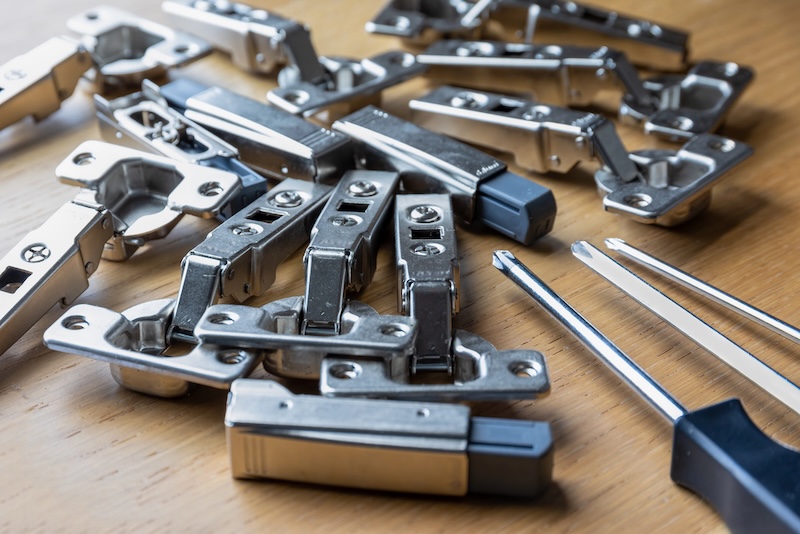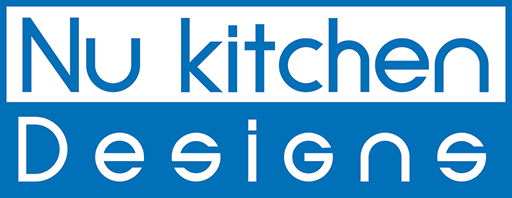Slamming cabinet doors can wear down hinges, chip paint, and disturb the peace in your home—especially in busy kitchens or households with children. That’s why many homeowners are considering soft-close hinges, a feature that gently closes doors without making a sound.
Now found in most modern kitchen designs, these hinges are marketed as a minor upgrade with a big impact. But are they just a trendy add-on, or do they actually deliver lasting value?
For anyone considering cabinet refurbishing, refacing, or installing new cabinets altogether, choosing the proper hardware is more important than it seems. Whether you’re focused on preserving your cabinetry, adding a premium touch, or simply making your kitchen feel more functional, this guide breaks down when soft-close hinges are worth the extra cost—and when they’re not. Perfect for homeowners planning a kitchen upgrade and wanting smarter, more informed decisions.
Table of Contents
ToggleWhat Are Soft-Close Hinges and How Do They Work?
So, how exactly do soft-close hinges keep your cabinet doors quiet and gentle? Soft-close hinges use a hydraulic or piston-based mechanism that slows the movement of the cabinet door before it shuts. Instead of slamming, the door closes quietly and gently, reducing noise and preventing damage.
These hinges are commonly found in kitchen cabinets, bathroom vanities, and drawer systems. They come in several types, with easy installation on face frames or frameless cabinets.
Hinge Type | Best For | Notes |
Blum soft-close | High-end kitchen projects | Known for smooth motion |
Self-close | Budget-friendly installations | Uses a spring, not hydraulic |
Overlay cabinet | Partial/full overlay doors | Mounts directly to cabinet frame |
Inset hinges | Inset cabinet doors | Hidden inside the cabinet face |
Compared to typical hinges, soft-close cabinet hinges protect your cabinets from wear, keep your fingers secure from pinching, and extend the lifespan of your cabinets, saving you time and money on future repairs.
Benefits of Soft-Close Hinges for Your Kitchen Cabinets
Installing soft-close hinges on your cabinets offers several clear advantages. If you’re tired of cabinet doors slamming shut or getting damaged, these cabinet door hinges make a real difference. Compared to standard hinges, soft-close hinges protect your cabinetry investment, especially valuable when refacing or refurbishing existing cabinets.
Here are four key reasons you’ll appreciate them in your home:
- Reduced Noise: Doors close softly, cutting down loud banging noises—perfect for quiet mornings or late-night kitchen visits.
- Extended Cabinet Life: The gentle closure reduces wear on your cabinet frames and doors, keeping them looking new for years.
- Safety for Families: Kids’ fingers stay safe from painful pinches because cabinet doors close slowly.
- Premium Feel: Installing quality brands like Blum soft-close hinges adds an upscale touch, enhancing your home’s overall value and appeal.
Considering a cabinet upgrade? Learn whether cabinet refurbishing or refacing saves you more.
Cost Breakdown – Are Soft-Close Hinges Really Worth It?
Understanding the true cost of soft-close hinges helps you decide if they’re worth the investment. Here’s a simple table to easily compare your DIY installation versus hiring a professional:
Cost Factor | DIY Installation | Professional Installation |
Hinge price | $5–$15 each hinge | $5–$15 each hinge |
Mounting screws | Included | Included |
Labor cost | Free (your time) | $200–$500 total |
Total example (20 hinges) | ~$100–$300 | ~$300–$800 |
While upfront costs are higher with professional installation, remember the added benefits. Soft-close hinges protect your custom cabinets, reducing long-term maintenance expenses by preventing slamming damage each time your cabinet door closes. Plus, the enhanced look of your overlay cabinet doors increases home value, meaning better return on investment when selling or refinancing your home.
Are Soft-Close Hinges Compatible with Overlay Cabinets?
You might wonder if soft-close hinges fit well with your overlay cabinets. Good news—they usually do, whether your cabinets have a partial or full overlay. Both styles benefit from the gentle closing provided by the soft-close mechanism, keeping your kitchen quiet and protecting cabinet doors from slamming damage.
With partial overlay cabinets, you have a bit more space around doors, making alignment straightforward. For full overlay cabinets, hinges fit snugly because doors cover more of the cabinet frame. This tighter fit sometimes causes alignment challenges, meaning accurate measurements become essential to ensure your cabinet door closes properly.
Pairing soft-close hinges with modern overlays enhances both function and aesthetics, giving your cabinets a polished look. To clearly understand the differences between partial and full overlay cabinets, check out this helpful comparison. It will help ensure you’re choosing the best hinge fit for your kitchen upgrade.
Retrofitting vs. New Installation: What to Know
Considering soft-close hinges for your cabinets? You have two options: retrofitting or installing them new. Retrofitting means adding soft-close hinges to existing cabinets. It’s usually possible, but your doors and cabinet frames must be in good shape for hinges to align correctly.
If you’re already remodeling or refacing cabinets, that’s the ideal time to install soft-close hinges. It’s easier and more cost-effective when cabinets are being updated anyway.
For partial upgrades, keep these tips in mind:
- Check that existing cabinets and doors are sturdy enough to support new hinges.
- Measure carefully to ensure hinges fit your current setup.
- Opt for hinge adapters if your cabinets have unusual sizing.
- If you’re unsure, test hinges on a few cabinets before fully committing.
Doing this helps you enjoy the benefits of soft-close hinges without fully replacing your cabinets, saving both time and money.
Final Verdict: Who Should Invest in Soft-Close Hinges?

So, are soft-close hinges worth the investment? The answer depends on your needs. If you’re remodeling or refacing cabinets, soft-close hinges add real value. They protect cabinet doors, reduce noise, and make kitchens safer, especially for families with young kids.
You also benefit if you’re planning to sell your home. Homebuyers notice small details, and features like soft-close hinges signal a quality upgrade. For partial updates or quick kitchen refreshes, consider retrofitting hinges if your cabinets are sturdy and well-aligned.
Ultimately, investing in soft-close hinges pays off for anyone who appreciates quiet convenience, improved cabinet durability, and a premium feel. Need help deciding or ready to upgrade? Nu Kitchen Designs provides expert advice and professional installation, ensuring your kitchen cabinets meet your exact needs, making your home both functional and welcoming.
Frequently Asked Questions
Yes. Soft-close hinges protect your cabinets from damage, reduce noise, and improve safety—especially beneficial for households with children. They also enhance kitchen aesthetics, boosting resale value.
Usually, yes. Soft-close hinges can often be retrofitted onto existing cabinets if doors and frames are sturdy and correctly aligned. Accurate measurement is crucial to ensure proper fit.
Soft-close hinges feature a built-in hydraulic or piston mechanism that gently and quietly closes cabinet doors safely. Standard hinges lack this mechanism, allowing doors to slam shut.
Yes. Soft-close hinges fit both partial- and full-overlay cabinet doors. Partial overlay hinges offer easier installation due to extra spacing, while full overlay installations require careful alignment.
Professional installation typically costs around $300–$800 total for about 20 hinges, including labor and materials. Costs vary based on location, hinge type, and cabinet complexity.
Homeowners remodeling or refacing cabinets, families prioritizing child safety, and anyone preparing their home for resale benefit significantly from installing soft-close hinges.


